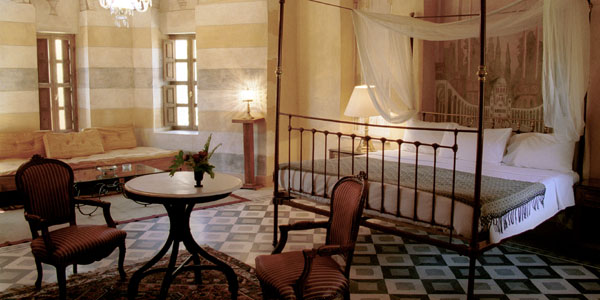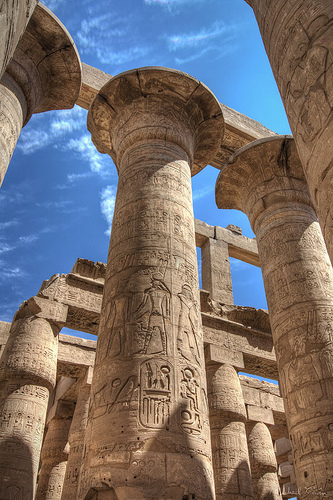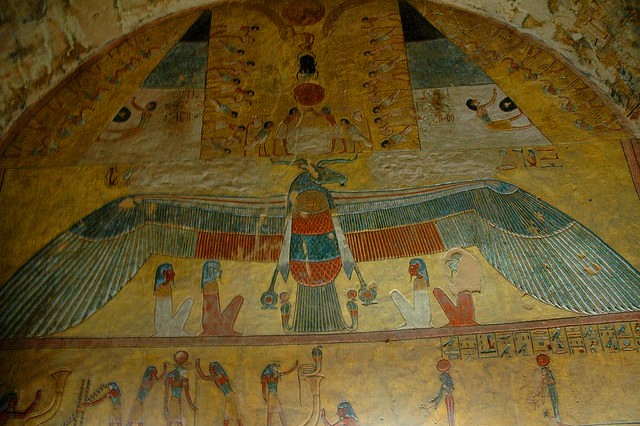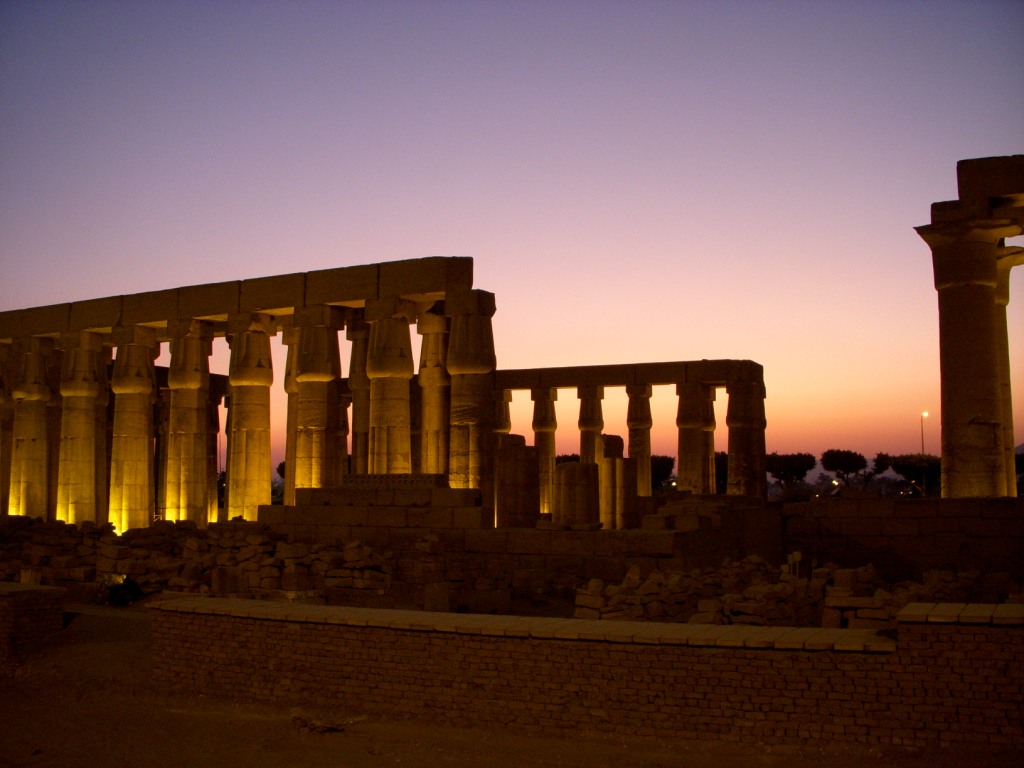Why Go
A trip to the hot and sandy city of Luxor takes you straight to the heart of the ancient world. Luxor, located in Upper Egypt, is a city surrounded by massive mountains and ageless temples. Luxor was built upon the ancient city of Thebes, which became the center of culture and religion in Ancient Egypt with the dawn of the Middle Kingdom (2125-1750 B.C.). The ancient Pharaohs built massive and ornate landmarks around modern-day Luxor to forever cement their legacy, and many of these temples and tombs can still be visited today. These include the stunning Karnak, Luxor, and Hatshepsut Temples, as well as the Valley of the Kings, the world’s most famous cemetery. For anyone interested in ancient history, Luxor is a city that cannot be left off the itinerary.
Insider Tips
- In Luxor, you’ll often hear people refer to the East and West Bank. Almost all of the city’s restaurants, museums, and hotels are located on the East Bank. The remarkably gorgeous Karnak and Luxor Temples are also on this side of the Nile. Meanwhile, because the sun sets in the west, the ancient Egyptians built their mortuary temples and tombs in the jagged mountains along the West Bank.
- Many of Luxor’s most popular attractions are located in the heart of the city. Thus, you can visit many of these sites on foot, although there are many touts offering a caleche (carriage) ride around the sites. Although these men will initially ask for 200+ Egyptian Pounds per hour (about $33 USD), they will usually accept about 60 Pounds ($10 USD.) Taxis around town will cost about 20-30 Egyptian Pounds ($3-5 USD), but a ride to the temples and tombs on the West Bank will likely set you back around 125 Pounds (about $20 USD.)
- The Luxor airport is about twenty minutes outside of town. The cab drivers waiting at the Luxor airport are known for preying on tourists so you can expect to be charged about 120 Egyptian Pounds ($20 USD) for this brief cab ride. Thus, you may want to consider checking to see if your hotel or tour group offers a more affordable, or even free, shuttle to and from the airport.
- When traveling in the Middle East, it is often very challenging to find the delicate balance between dressing comfortably and being respectful of the local customs. However, Luxor is definitely not one of those places. There are always thousands of tourists visiting Luxor, and it can be so incredibly hot that wearing short-sleeved shirts and shorts is perfectly acceptable. However, it can get be a bit chilly in the evenings and so you should also bring at least one light jacket.
- Avoid drinking any tap water and even use the bottled variety to brush your teeth. If you order any juices or soft drinks, make sure that no ice or water has been added to your beverage. If you have an especially sensitive stomach, you may also want to avoid uncooked vegetables and salads.
Where to Stay in Luxor
Most of the hotels in Luxor are located on the East Bank, just south of the Luxor Temple. If you stay in this area, you will be a short walk to many historical sites and excellent dining opportunities. As in the rest of Egypt, there is an incredible range of accommodations in Luxor. You can find a comfortable private room at a hostel, with air conditioning, that only costs $10 USD/night. Just a few blocks away, there are fancy hotels that cost more than $300/night. The Al Moudira and the Sofitel Winter Palace are the two nicest hotels in the city and they are both full of Egyptian culture and charm. You can also find very nice hotels in the city for about $100/night, and some moderately priced options, such as the Gaddis Hotel or El Nakhil, for around $40/night.

What to eat
With so many tourists roaming the streets in Luxor each day, it is no surprise that you will find many excellent dining choices in this historic city. You can find many traditional Egyptian restaurants, international dining choices, and just across the street from the Luxor Temple, you can even find a number of western fast food joints. However, most of the city’s best restaurants and bars are located along the calm waters of the Nile River. Plan to spend at least one night in Luxor hanging out at one of these beautiful restaurants, such as El Kababgy, and watch the feluccas sails down the Nile. Another excellent dining choice is Sofra, located just a few blocks from the Luxor train station. You will find incredible Egyptian fare at this restaurant and the rustic settings of this dimly lit restaurant are absolutely beautiful.
What to see
 Luxor is full of remarkable landmarks and you probably need at least two days to fully appreciate the wealth of history in the city. Karnak Temple, the second most visited site in Egypt, must be included on any itinerary. You can spend hours aimlessly walking around this sprawling complex. However, the history of this temple is so endless that you should strongly consider hiring a guide to take you through Karnak. You can find a handful of men offering such services by the ticket window, and you should expect to pay about 100 Egyptian Pounds (about $17 USD) for a ninety-minute tour.
Luxor is full of remarkable landmarks and you probably need at least two days to fully appreciate the wealth of history in the city. Karnak Temple, the second most visited site in Egypt, must be included on any itinerary. You can spend hours aimlessly walking around this sprawling complex. However, the history of this temple is so endless that you should strongly consider hiring a guide to take you through Karnak. You can find a handful of men offering such services by the ticket window, and you should expect to pay about 100 Egyptian Pounds (about $17 USD) for a ninety-minute tour.
Hiring a guide is less imperative at the much smaller, but still impressive, Luxor Temple. This temple, built around 1500 B.C. is conveniently located in the middle of town and is best coupled with a stroll through the nearby markets. However, even if you tour the Luxor Temple during the morning or afternoon, be sure to visit the site around sunset. As the sun slowly fades behind the rocky mountains on the West Bank, orange and yellow rays will magnificently light the temple’s ancient columns. This scene is truly one of the most spectacular in all of Egypt and will cost you absolutely nothing.
In addition to the temples in the city, a visit to Luxor is not complete without a visit to the West Bank. There you will find the world’s most famous graveyard: the Valley of the Kings. The tombs of dozens of ancient pharaohs are carved into the mountains surrounding this valley. However, you are only allowed access to three tombs, of your choosing, with the purchase of an admission ticket. King Tut’s historic tomb is open to the public, but you have to purchase an additional ticket to visit the chambers Howard Carter unearthed in 1922. Since all of those treasures are now in the Egyptian Museum in Cairo, it is probably one of the least interesting tombs in the Valley of the Kings.
If the tombs of Seti I or Ramses III are open during your visit, be sure to take a tour of these beautiful burial chambers. Seeing hieroglyphs and detailed carvings is pretty common in Egypt, but the still brilliant colors in these 3,000-year-old tombs are absolutely stunning. If the ornately decorated walls of the Valleys of the Kings fail to satisfy your artistic and historical desires, you can also visit the nearby Valley of the Queens and the Valley of the Nobles.

Also on the West Bank, the Mortuary Temple of Hatshepsut is certainly worth a visit. This massive temple, dedicated to one of Egypt’s rare female Pharaohs, is a beautiful temple built directly into the mountain. You should also take a quick peek at the nearby Colossi of Memnon and the Ramesseum, the mortuary temple of Egypt’s most famous, and narcissistic Pharaoh, Ramses II.
Traditionally, a popular way to see the West Bank was from inside the basket of a hot air balloon. However, this industry was temporarily closed down in 2009 after an unfortunate crash. If it has reopened by the time of your trip, a sunrise hot air balloon across these arid lands is an absolutely priceless experience, and one that can be had for about $100 USD/person.
Luxor is often described as the world’s oldest and largest “open air museum.” With so many temples and tombs surrounding Luxor, all filled with priceless treasures, there are very few museums in the city. However, the two in the city are definitely worth visiting. The Luxor Museum is organized very well and has a tremendous wealth of historical pieces. However, note that it costs about 75 Egyptian Pounds for adults (about $13 USD), which is considerably more expensive than other museums in Egypt. If you’d like to see a museum in Luxor, but want something a little unique, then the Mummification Museum may be a good option. It is incredibly small, but has a wide range of incredibly interesting pieces, ranging from mummified cats and alligators, to the tools used to carry out this gruesome process.
Photos: Andrew McCormick, Al Moudira Hotel, Michael Caven, Gaspa
